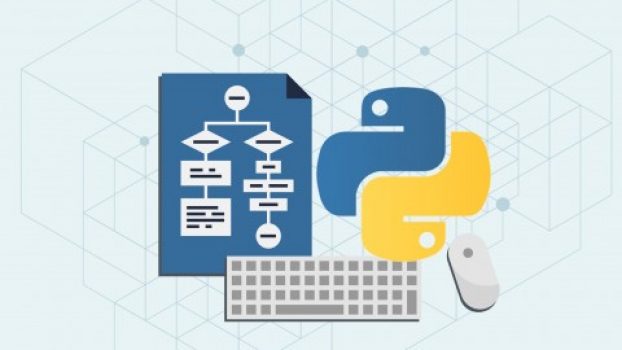What you’ll learn
-
Understand arrays and linked lists
-
Understand stacks and queues
-
Understand tree like data structures (binary search trees)
-
Understand balances trees (AVL trees and red-black trees)
-
Understand heap data structures
-
Understand hashing, hash tables and dictionaries
-
Understand the differences between data structures and abstract data types
-
Understand graph traversing (BFS and DFS)
-
Understand shortest path algorithms such as Dijkstra’s approach or Bellman-Ford method
-
Understand minimum spanning trees (Prims’s algorithm)
-
Understand sorting algorithms
-
Be able to develop your own algorithms
-
Have a good grasp of algorithmic thinking
-
Be able to detect and correct inefficient code snippets
Section 1:
- setting up the environment
- differences between data structures and abstract data types
Section 2 – Arrays:
- what is an array data structure
- arrays related interview questions
Section 3 – Linked Lists:
- linked list data structure and its implementation
- doubly linked lists
- linked lists related interview questions
Section 4 – Stacks and Queues:
- stacks and queues
- stack memory and heap memory
- how the stack memory works exactly?
- stacks and queues related interview questions
Section 5 – Binary Search Trees:
- what are binary search trees
- practical applications of binary search trees
- problems with binary trees
Section 6 – Balanced Binary Trees (AVL Trees and Red-Black Trees):
- why to use balanced binary search trees
- AVL trees
- red-black trees
Section 7 – Priority Queues and Heaps:
- what are priority queues
- what are heaps
- heapsort algorithm overview
Section 8 – Hashing and Dictionaries:
- associative arrays and dictionaries
- how to achieve O(1) constant running time with hashing
Section 9 – Graph Traversal:
- basic graph algorithms
- breadth-first
- depth-first search
- stack memory visualization for DFS
Section 10 – Shortest Path problems (Dijkstra’s and Bellman-Ford Algorithms):
- shortest path algorithms
- Dijkstra’s algorithm
- Bellman-Ford algorithm
- how to detect arbitrage opportunities on the FOREX?
Section 11 – Spanning Trees (Kruskal’s and Prim’s Approaches):
- what are spanning trees
- what is the union-find data structure and how to use it
- Kruskal’s algorithm theory and implementation as well
- Prim’s algorithm
Section 12 – Sorting Algorithms
- sorting algorithms
- bubble sort, selection sort and insertion sort
- quicksort and merge sort
- non-comparison based sorting algorithms
- counting sort and radix sort
Who this course is for:
- Beginner Python developers curious about graphs, algorithms and data structures
Can I download Algorithms and Data Structures in Python (INTERVIEW Q&A) course?
You can download videos for offline viewing in the Android/iOS app. When course instructors enable the downloading feature for lectures of the course, then it can be downloaded for offline viewing on a desktop.Can I get a certificate after completing the course?
Yes, upon successful completion of the course, learners will get the course e-Certification from the course provider. The Algorithms and Data Structures in Python (INTERVIEW Q&A) course certification is a proof that you completed and passed the course. You can download it, attach it to your resume, share it through social media.Are there any other coupons available for this course?
You can check out for more Udemy coupons @ www.coursecouponclub.com
Note: 100% OFF Udemy coupon codes are valid for maximum 3 days only. Look for "ENROLL NOW" button at the end of the post.
Disclosure: This post may contain affiliate links and we may get small commission if you make a purchase. Read more about Affiliate disclosure here.
Disclosure: This post may contain affiliate links and we may get small commission if you make a purchase. Read more about Affiliate disclosure here.


